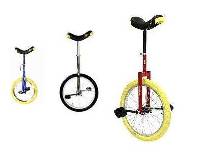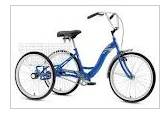







|
Back Unit 4.1
|
Home Cover Page
|
Top Unit 4.2
|
Next Unit 4.3
|
Unit Four: Chemical Reactions and Stoichiometry
Materials
Charts for formulas of molecules, picture of bicycle, tricycle and automobile
|
|
|
|
Teacher’s Note
Writing and balancing chemical equations should begin after students managed to write the correct formula of a compound and understand the qualitative and quantitative meanings of symbols, formulas and equations.
In balancing chemical equations, students do not easily understand why they should not change subscripts as far as they are able to make the number of atoms on both sides equal. This lesson should be given as the second lesson in sub-topic 4.3 Chemical equation after students studied writing chemical equation.
The lesson can be started by revising writing chemical equation and its qualitative and quantitative meanings. Students may individually be asked the steps of writing an equation. Let them write the word equation of a given reaction and change it to skeletal equation.
For example reactions between: hydrogen and oxygen, sulphur and chlorine, sodium hydroxide and hydrochloric acid, calcium carbonate and sulphuric acid.
Let them tell the qualitative and quantitative meanings of their equations. Many students should take part in this revision.
When describing the qualitative and quantitative meanings students may misuse the terms molecules for non-molecular compounds like NaOH and CaCO3. Help them to use ‘formula unit’ instead of molecule. But they can use mole in both cases.
What are the qualitative and quantitative meanings of the chemical equation?
NaHCO3 + CH3COOH → CH3COONa + CO2 + H2O
Answer
The analogy of assembling vehicle bodies
Procedure
A factory manufactures vehicle bodies (monocycle, bicycle, tricycle and automobile) and buys tyres from another manufacturer to make a complete vehicle. The tyre manufacturer sells the tyres only in pairs.
The vehicles producer wants to make sample vehicles with minimum number.
Concluding activity
Give them more advanced reactions to balance.
Let them explain why the formulas cannot be changed during balancing. Let them associate balancing equation with the laws of chemical reaction.